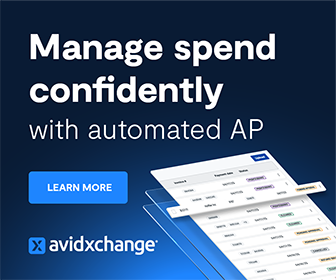Cloud computing has transformed the way businesses operate, offering scalability, flexibility, and faster deployment of digital initiatives. However, with these benefits comes a new set of financial challenges: If they are not actively managed, cloud services can quickly lead to unpredictable and escalating costs.
As a finance leader, you need to stop looking at cloud spending as just another line item. It’s a dynamic, business-critical investment that requires continuous oversight. FinOps, a fusion of “finance” and “DevOps,” provides a framework for managing cloud costs transparently and collaboratively across finance, technology, and business units.
By adopting FinOps principles, you can foster a culture of accountability and ensure that cloud investments align with the company’s overall strategy. Learn the key FinOps principles for optimizing costs without stifling innovation.
Understanding FinOps in the Controller’s Context
FinOps is not simply a cost-cutting exercise. The goal is to maximize the business value of the cloud through cross-functional collaboration.
In many organizations, engineering teams have full control over cloud usage, while finance only sees the bill at the end of the month. This disconnect can lead to overspending and difficulty forecasting costs.
As a financial steward, you can bridge this gap. FinOps empowers you to:
- Gain real-time visibility into cloud spend
- Allocate costs to the right teams or projects
- Encourage engineering teams to consider cost implications in their architecture
- Support executive decision-making with accurate forecasts and usage trends
Modern finance leaders thrive when they’re embedded in operations decision-making. FinOps allows you to step deeper into that role.
Core Principles of FinOps
FinOps involves several guiding principles, but the following three stand out for controllers.
Visibility and Transparency
You can’t manage what you can’t see. FinOps starts with clear, granular reporting of cloud costs. These expenses are broken down by department, project, application, or even individual services. This visibility enables:
- Better forecasting and budgeting
- Identification of cost anomalies before they spiral
- Fact-based conversations about trade-offs between performance, reliability, and cost
To achieve this level of visibility, you’ll need to collaborate with other department heads, including IT.
Optimization
Continuous improvement is central to FinOps. Partner with engineering teams to:
- Right-size resources based on actual usage
- Take advantage of reserved instances or committed-use discounts
- Eliminate orphaned or idle resources
Like many businesses, your organization is likely exploring ways to cut costs in 2025. Eliminating excess cloud computing expenses is a great place to start.
Collaboration and Shared Accountability
FinOps thrives when finance, engineering, and business teams work together. With that in mind, establish shared KPIs so that everyone has a stake in optimizing spend.
Don’t get lost in the weeds. Instead, get various teams involved to ensure that the metrics you choose are relevant and useful.
Building a Collaborative Cloud Spend Culture
To make cloud spend optimization a collaborative process, plan for these stages of implementation.
Establish Allocation Models
Implement chargeback or showback models. You can allocate the costs accurately to each department through chargeback billing, or use a showback allocation strategy to display usage and costs without billing. Either method allows teams to visualize cloud consumption and encourages department heads to promote responsible usage.
Implement Usage Alerts
Set automated alerts for unusual spikes in consumption. When you receive an alert, you can task your IT department with uncovering the root cause. These alerts prevent bill shock and give teams a chance to address inefficiencies before they cause your monthly cloud costs to skyrocket.
Facilitate Regular Cross-Functional Reviews
Monthly or quarterly meetings between finance, engineering, and product owners will ensure alignment on budget, usage patterns, and cost-saving opportunities. These sessions should be respectful of everyone’s time and voice. Keep them data-driven and focused in order to discourage prolonged, unproductive discussions.
Tools and Techniques for Controllers
To operationalize FinOps, leverage these tools:
- Tagging and Labeling: Assign tags to cloud resources to track costs by business unit, project, or customer
- Savings Plans: Commit to certain usage levels in exchange for discounts
- Automation for Resource Management: Turn off non-production environments after business hours
- Benchmarking: Compare cloud spend efficiency against industry peers
While adopting FinOps principles requires a commitment, the long-term benefits are worth the effort. Over time, you will reduce waste and unlock significant savings, which will free up funding to pursue other initiatives.
However, you’ll have to overcome several key roadblocks along the way, including:
- Data overload
- Cultural resistance
- Rapidly changing pricing models
This is where you’ll rise to the challenge, gathering multidepartmental support to spearhead the charge to adopt FinOps.
Are You Ready to Reassess Your Cloud Spending?
Cloud computing is here to stay, and with it comes the need for a more collaborative approach to cost management. FinOps offers controllers a structured, proven methodology for ensuring cloud investments deliver tangible business value.
Is it time to assess your organization’s cloud expenditures? Use the FinOps framework to promote accountability and drive the business forward.




